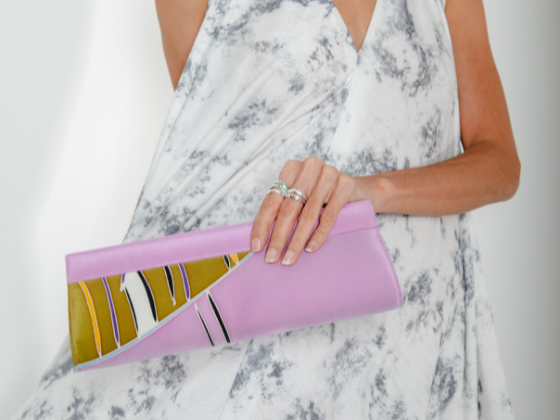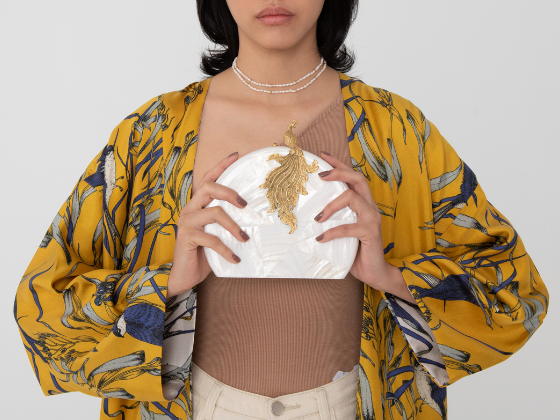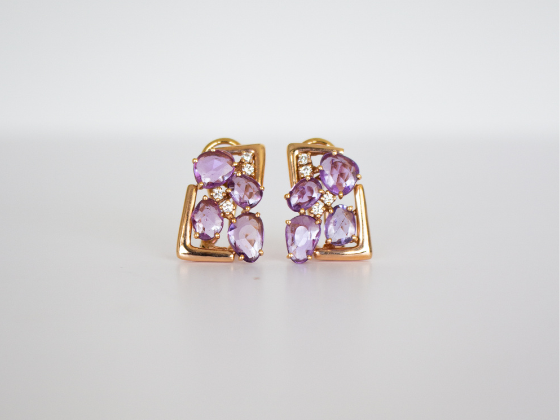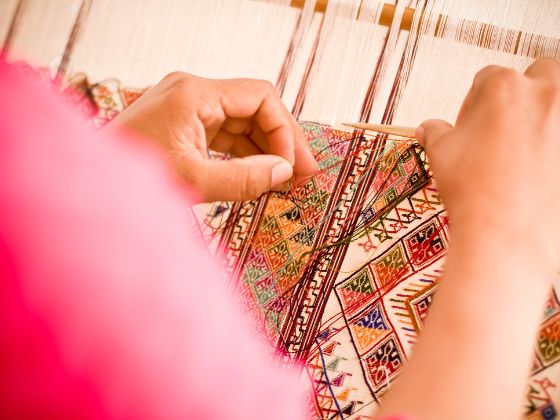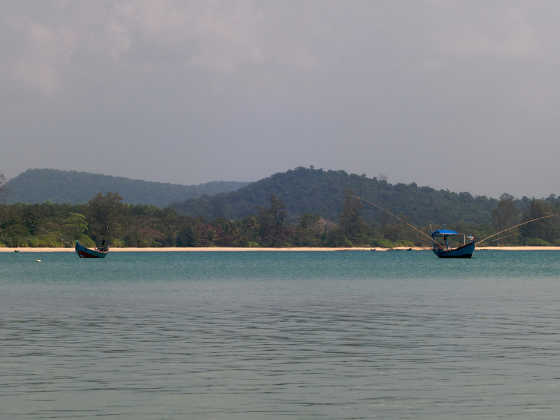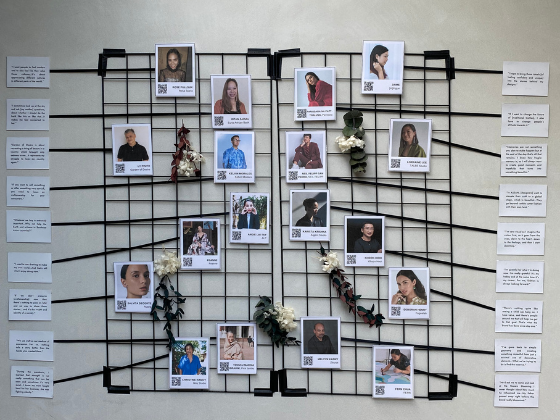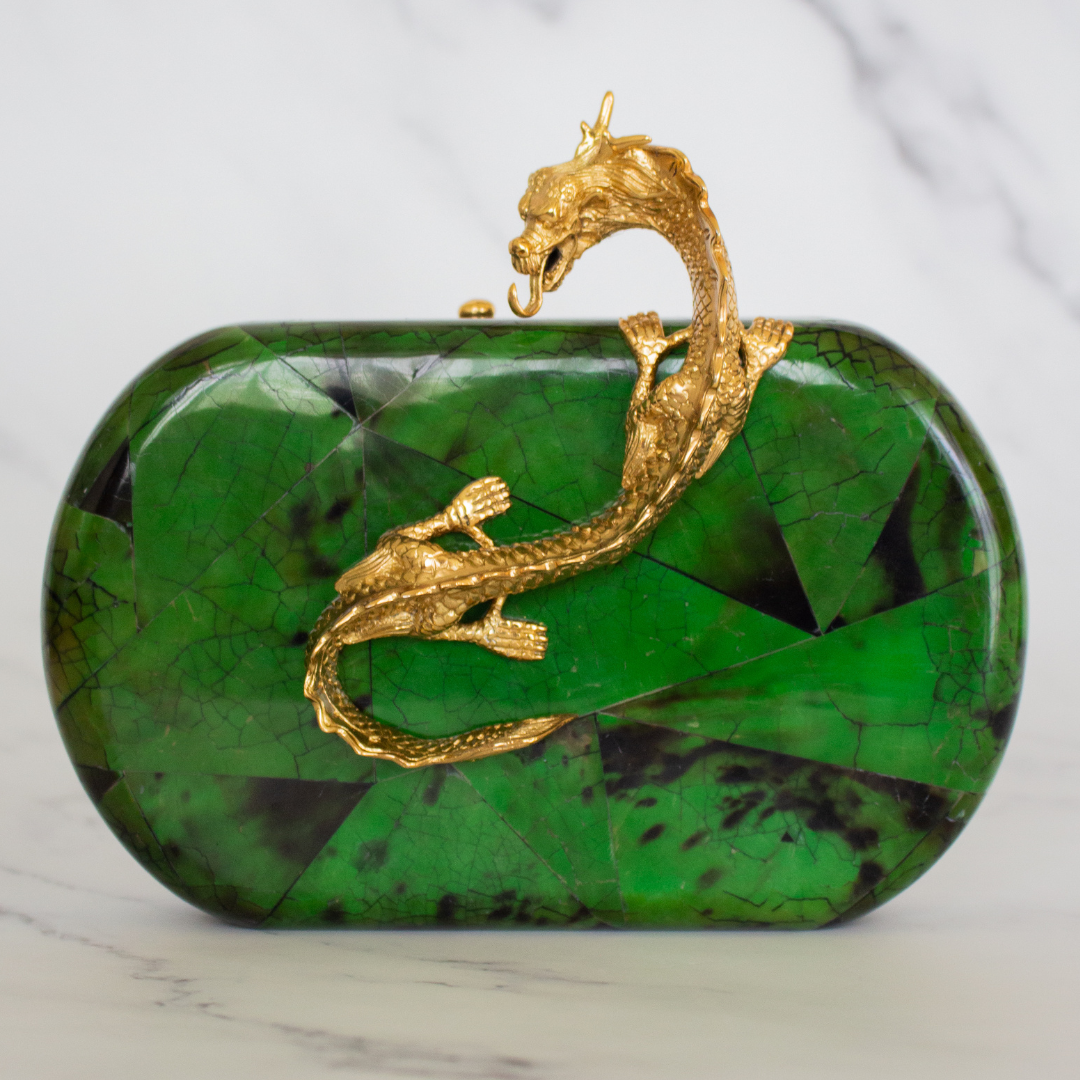By Aisha Hassan on Friday, 8 December 2023
There were many forces that brought Gustoko and Dia together: Alia saw a bag at a resort in Boracay, Kylie and Aisha met a friend of the founder by chance, and it turns out that Feanne, a longtime Dia partner, had collaborated with them before. With Gustoko’s stunning designs, which incorporate indigenous Philippine weaves and are crafted by expert artisans, the signs were clear — we needed to pitch the founder, Paula Figueras, and get Gustoko on Dia.
When Paula first moved to Portugal in 2012, she couldn’t find a job because she didn’t speak Portuguese yet, and she was also traveling back and forth between Lisbon and Manila because she was homesick. On one of these trips, her sister, an interior designer, convinced her to visit Manila FAME, the country’s premier trade fair for fashion, interiors, and design. This experience opened Paula’s eyes to the expert craftsmanship in the Philippines, and she was determined to share it with the world. In 2014, Gustoko was born.
Paula has always had an enterprising spirit, from helping out at her grandmother’s neighborhood store to reselling nuts and candies at school. While Gustoko began as a buy-and-sell business, bringing ready made products to be sold in Portugal, it has now grown into an independent brand with a distinct sense of design and specialized artisans. As Paula puts it, if condensed into three words, Gustoko is “unique, sustainable, and stylish.”
Discover the deeper story behind Gustoko in Paula’s own words, below.
Tell us about the brand’s inception.
Until my first time at Manila FAME, I never knew that the Philippines had all those beautiful, unique, and high quality products that were mainly sold as exports abroad and seldom in the local market. I spent the whole day talking to artisans, manufacturers and industry creatives from different parts of the country. I was inspired by the small manufacturers who told me stories of how they help and support their communities by giving them collective work.
I met a couple from the Leyte province who were there just to sell off the remaining handwoven Ticog bags that they were able to save from the big typhoon that hit their province. The floods destroyed and washed out almost every part of their production site. As I spoke with them, I was astonished at how concerned they were about getting back on their feet so they could continue providing jobs for their little town. They never mentioned how much money they personally lost in their business, but instead they kept on mentioning the people who depend on them for a livelihood and how they couldn’t let them down. I was moved by their story and ended up buying most of the clutch bags that they had, even if I didn’t know what I was going to do with them.
If you asked me what was the catalyzing moment or the reason why I created Gustoko, it was that conversation with this couple.
What is the story behind the brand’s name?
I wanted to have a brand name which can be both Filipino and Portuguese. I first thought of “Gusto,” because the word is similar to its Portuguese counterpart, which is “Gosto.” But then I saw that there was already a Spanish restaurant with that name, so I just added “Ko”. Gusto in our local Filipino language means “Like,” and Ko means “I,” so “Gustoko” basically means “I Like”.
Can you tell us about your artisan communities?
Most of our artisans came from the provinces, and before working with us they were in Manila on their own to earn more money, and most of their earnings were being sent to their families. After just one or two years of working with Gustoko, and having fair and higher wages, as well as better working conditions than before, they were able to get some of their family members to live with them in Manila. I can see how some of them are now able to invest in things like furniture, bicycles, and even sending all their kids to school.
How did you find your first team of artisans?
While having the shop in Lisbon, I was able to gather a lot of feedback about the Philippine products I was selling. The bags were by far the most popular, but there were several comments about how the designs were very “Asian” or didn’t fit the season’s latest trends, styles, or colors.
I told this to the manufacturers I was working with at the time, but some of them were not very keen on producing new items. We also had communication issues because most of them live in remote provinces without proper phone signal, and it’s difficult to convey design ideas without being face-to-face. After some research and help from trade offices in Manila, I was referred to an established bag manufacturer in my hometown of Marikina. After I paid them a visit, we started working together until the pandemic. They had around 20-25 bag artisans and were very flexible in regards to new sample development. I hired my aunt, who lived nearby, to be my assistant whenever I was on Portugal.
The manufacturer had to close down in 2020 due to the pandemic, but their artisans, who we knew well by then, asked us to more work, and one by one were able to hire those who remained in Manila, and we set up our own workshop by the end of 2020.
Can you zoom in on one of the pieces from Dia’s first collection of Gustoko?
The Alentejo in Beige is one of my favorites from our most recent collection. I love the closure with a rattan accent and the nude, neutral colors of the bag. I’ve admired rattan and the the Solihiya style of weaving since I was a child. We had rocking chairs made with this fiber and I loved falling asleep in them. To have a small piece of rattan in the Alentejo bag’s closure is a bit nostalgic and reminds me of my wonderful childhood memories with my family.
What’s been inspiring you lately?
Travelling has always inspired me, especially in the creation of new bag designs. But recently, I’ve been looking more towards vintage and antique pieces for inspiration. My trip to Florence last year opened my eyes and ears to the wonderful history and culture to be learned from every beautiful antique piece. I loved hearing stories from the shop owners about specific products that were passed on from families or generations, and I began to imagine how those pieces have been in a different era and still continue to exist till now.
What are your top three recommendations for Lisbon?
Be sure not to miss Ramiro Restaurant for the seafood, as the Portugueses are the best when it comes to grilled fish. Stop by Sintra, located on top of a mountain in the Metropolitan Lisbon area — I consider this place an enchanted forest where one can visit several castles that will take you back in time. And drive along the seaside road (Estrada Marginal) from Lisbon to Cascais. It’s known as one of the best in Europe and the view is amazing around sunset.
What is one of the biggest challenges you’ve faced as a founder, and how did you overcome it?
The Pandemic. To push through, I just went back to the main reason why I built the brand in the first place, and that is to help other people back home in the Philippines.
What type of legacy do you want to leave behind?
I’ve built something out of just the mere thoughts of wanting to help my countrymen and also to share how great Philippine craftsmanship is with the world. These thoughts are what I’ve been trying to instil and constantly remind my team in Manila: That we are here to help each other and to always strive, not for perfection, but for the best version of our work and products every time. I think that if I push my team to constantly find ways to improve our craft, in a way we can eventually develop into better versions of ourselves. Beyond being bag makers or artisans, we empower our team with tasks where they need to be more creative and problem solve together.
I guess this is the legacy that I want to leave behind. That here in Gustoko we take care of our own and we all grow as a team.
This interview has been edited for brevity and clarity.

